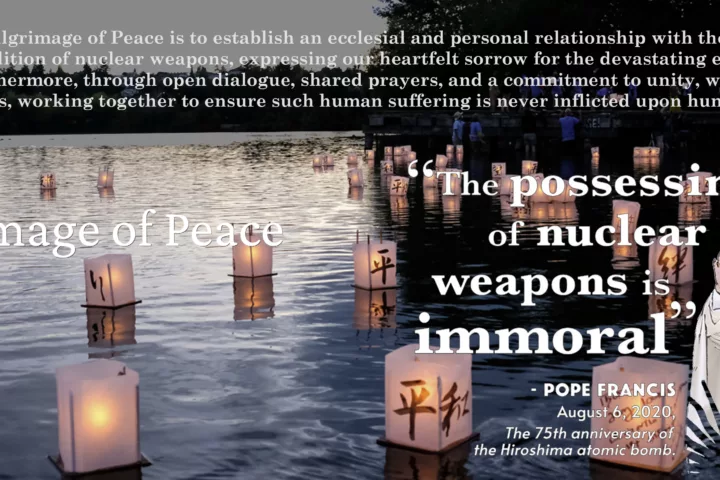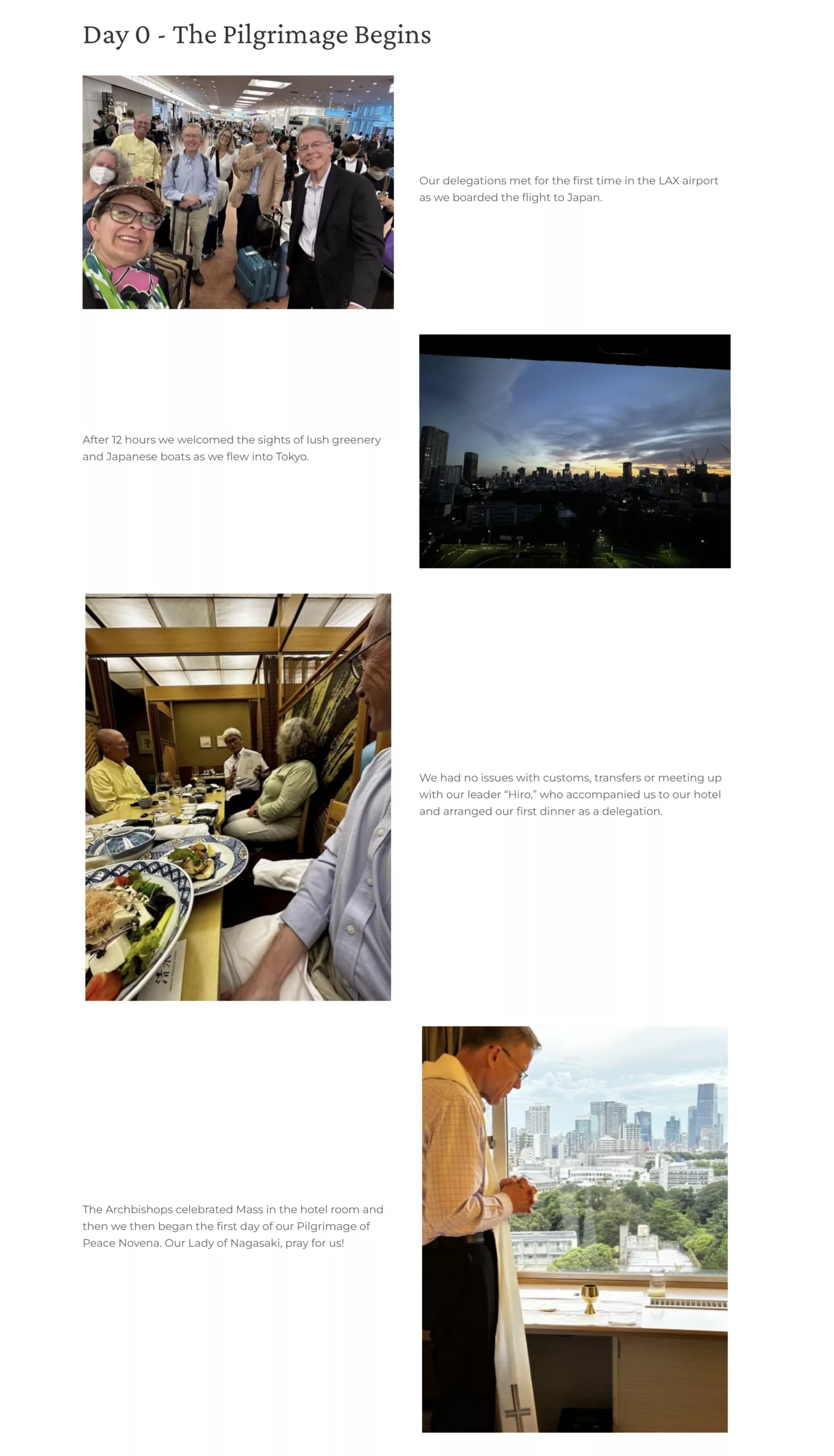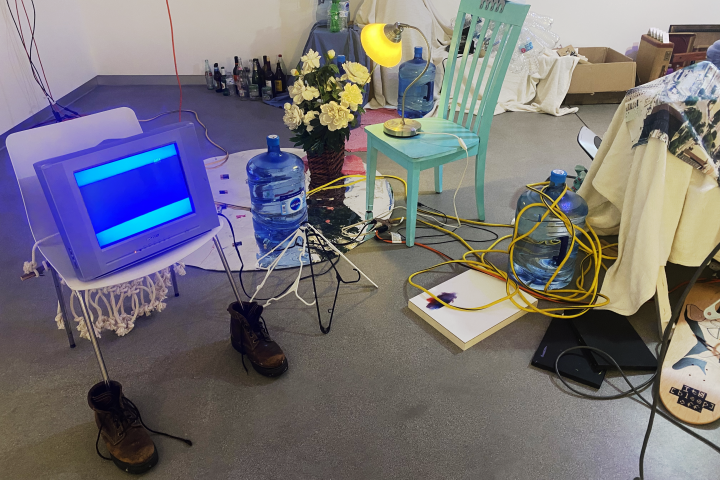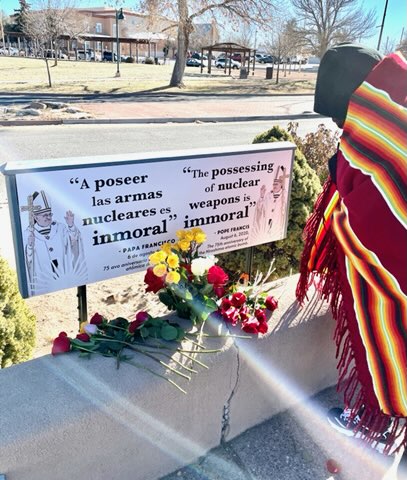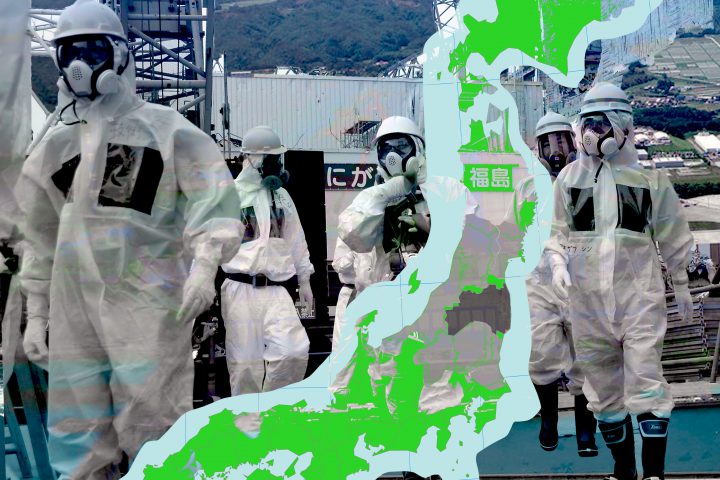Image Credit: The Archdiocese of Seattle Website (Daily Digests), Leslie M. Radigan & Archdiocese of Santa Fe Official Facebook Page, and Jay Coghlan of NukeWatch New Mexico.
























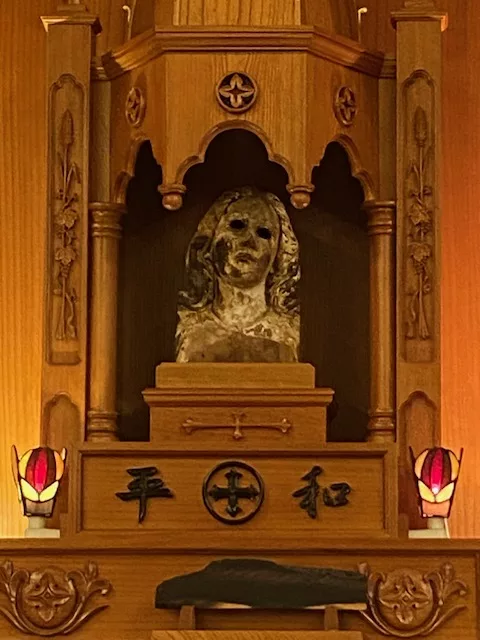

IMG_0387
August 1 - First day of our Pilgrimage of Peace Novena in Japan
IMG_0387
August 2 - At Sophia, a Catholic University in Tokyo, attended by our leader, Hiro, where we toured the campus and met some of his teachers.
IMG_0387
August 2 - AB Wester and AB Etienne met with a reporter for The Asahi Shimbun paper to discuss the vision and purpose of this Pilgrimage of Peace, saying “Pope Francis has changed the moral needle with a seismic shift in the thinking on nuclear. He is saying even having nuclear weapons is immoral. He is laying the challenge before us…We want to start and sustain a thriving conversation on nuclear.” They shared the vision for verifiable multilateral nuclear disarmament as a pathway to peace and explained that many might think they are naive. “But we believe it’s far more naive to continue with what we’re doing now.”
“We are here to see what we can do to advocate for peace and share the gospel,” said AB Etienne. We are here “to invite people to realize that we can have peace by growing relationships with our neighbors and communities. We need to do that as people before we can do so as nations.”
“We are here to see what we can do to advocate for peace and share the gospel,” said AB Etienne. We are here “to invite people to realize that we can have peace by growing relationships with our neighbors and communities. We need to do that as people before we can do so as nations.”
IMG_0387
August 3 - A train ride to Kamakura, a 12th-century city on the coast.
IMG_0387
August 3 - Walking up to the Zen Engaku-ji Temple in Kamakura, founded in 1282 by Mugaku Sogen to honor those killed in wars against Mongolia. The quiet and peacefulness of the temple grounds, meditation rooms, and garden were palpable.
IMG_0387
August 3 - The Zen Engaku-ji Temple, founded in 1282 by Mugaku Sogen to honor those killed in wars against Mongolia. The quiet and peacefulness of the temple grounds, meditation rooms, and garden were palpable.
IMG_0387
August 3 - The Great Buddha of Kamakura. The national treasure began in 1252 and was completed approximately 10 years later.
IMG_0387
August 3 - Kamakura Daibutsu (The Great Buddha of Kamakura). The national treasure began in 1252 and was completed approximately 10 years later.
IMG_0387
August 3 - In Kamakura, a 12th-century city on the coast of Japan, visiting the Sisters of the Visitation.
IMG_0387
IMG_0385
August 4 - Hiroshima Peace Memorial with Genbaku Dome in Background
IMG_0385
August 4 - New Mexico and Seattle Pilgrims of Peace at Genbaku Dome, Hiroshima Peace Memorial
IMG_0386
August 4 - Genbaku Dome, Hiroshima Peace Memorial
IMG_0387
August 4 - Genbaku Dome, Hiroshima Peace Memorial
IMG_0387
August 6 - The Hiroshima Peace Park sign.
IMG_0387
August 6 - In Hiroshima, Japan
IMG_0387
August 6 - Hiroshima, Japan: Amidst this solemn atmosphere, the day elicited a mix of grief, reverence, and a call for peace, underscoring the importance of nuclear disarmament and the lasting effects of human conflict.
IMG_0387
August 7 - Nagasaki, Japan: Upon arrival, we met with the Mayor of Nagasaki, Mr. Shiro Suzuki, at City Hall. Our goal was to share our mission and express our interest in working collaboratively with the city and Japan's Catholic bishops. He shares our goals and is committed to working to abolish nuclear weapons. Archbishop Wester presented Mayor Suzuki with an Executive Order from the City of Albuquerque Mayor Tim Keller commemorating August 9, 2023, "In Honor of The Japanese Innocent Lives Lost."
IMG_0387
August 7 - Nagasaki, Japan: Photo from event, "Interfaith Dialogue and Exchange of Religious Leaders with a Common Desire for World Peace"
IMG_0387
August 7 - Nagasaki, Japan: Urikami Cathedral for Mass
IMG_0387
August 8 - Nagasaki, Japan: the Atomic Bomb Museum.
IMG_0387
August 8 - Nagasaki, Japan: the Atomic Bomb Museum.
IMG_0387
August 9 - Our Lady of Nagasaki, a wooden head of the Virgin Mary that survived the bombing. Her burnt face is both miraculous and haunting as she reminds us of the devastation and pain of that horrific day.
IMG_0387
August 9 - The Madonna of Nagasaki - burnt 78 years ago by the plutonium bomb.
IMG_0387
August 9 - The Madonna of Nagasaki - burnt 78 years ago by the plutonium bomb.

